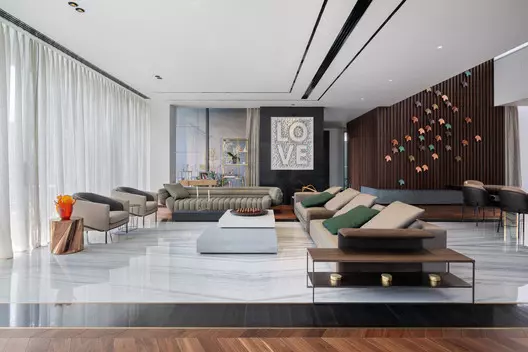 Living Bakkali Restaurant / Masquespacio. Image © Sebastian Erras
Living Bakkali Restaurant / Masquespacio. Image © Sebastian Erras
"The details are not the details. They make the design." - Charles Eames.
Creating attractive spaces that anticipate the needs of users relies on several factors: scale, circulation, functionality, and comfort. However, the visual appeal of a project is equally important in today's interior design landscape. In this article, we will delve into the aesthetic side of interior design, exploring popular styles and how architects and designers use elements such as color, furniture, accessories, and finishes to define their spatial identity.
Contemporary
Contemporary interior design has been one of the most popular styles over the past couple of decades. Known for its sleek and smooth surfaces, refined furniture selection, and avant-garde art pieces, contemporary-designed interiors exude a sense of timelessness. This style features streamlined materials, integration of wood, marble, and metallics, contrasted with bright and bold colors in wall art, lighting fixtures, or accent furniture pieces.
A prime example of contemporary design is the A | Residence by IAIA - Idea Art Interior Architects.
 A | Residence / IAIA - Idea Art Interior Architects. Image © Alex Jeffries
A | Residence / IAIA - Idea Art Interior Architects. Image © Alex Jeffries
Another noteworthy contemporary design is the Mit Chit House by Looklen Architects.
 Mit Chit House / Looklen Architects. Image © Varp Studio
Mit Chit House / Looklen Architects. Image © Varp Studio
Industrial
The industrial style draws inspiration from refurbished factories, showcasing exposed architectural elements such as pipes, brick walls, concrete surfaces, and beams. Originating in the late 1990s to early 2000s, this style gained popularity during a time when urban areas faced housing shortages. By repurposing old factories into loft apartments, designers embraced the rawness of the space while introducing a neutral color palette and rustic materials in furniture and pendant lighting.
The ASKWATCH Store by Kenta Nagai Studio exemplifies industrial design.
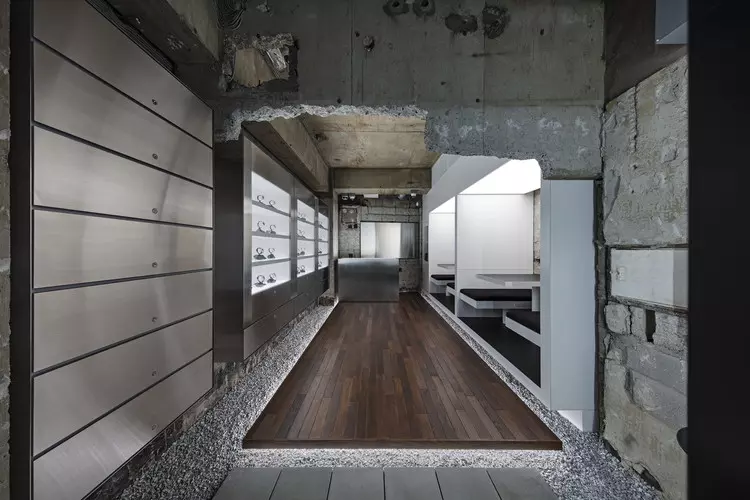 ASKWATCH Store / Kenta Nagai Studio. Image © Kenta Hasegawa
ASKWATCH Store / Kenta Nagai Studio. Image © Kenta Hasegawa
Art Loft Chai Wan by Mass Operations is another remarkable industrial-style project.
 Art Loft Chai Wan / Mass Operations. Image © Jonathan Maloney
Art Loft Chai Wan / Mass Operations. Image © Jonathan Maloney
Scandinavian
Nordic countries have their own design style known as Scandinavian design. This minimalistic style uses muted hues and a blend of textures to create sleek and contemporary decor, evoking warmth and coziness. Clean lines, simple-yet-functional furniture pieces, and an abundance of natural light are key characteristics. Sharp contrasts, particularly with color palettes, are common in Scandinavian design, often featuring all-white spaces contrasted with black sculptures or black and white photography.
The Flat in Zverynas by HEIMA architects embodies the essence of Scandinavian design.
 Flat in Zverynas / HEIMA architects. Image © Norbert Tukaj
Flat in Zverynas / HEIMA architects. Image © Norbert Tukaj
The Attic by f+f architectes is another stunning example of Scandinavian design.
 The Attic / f+f architectes. Image © Johan Fritzell
The Attic / f+f architectes. Image © Johan Fritzell
Asian Zen
Asian Zen interior design emphasizes harmony, calmness, and simplicity. Rather than focusing on specific features, Zen decor prioritizes creating a sense of tranquility. Natural elements like wood, sand, and rattan are commonly used, along with plants, rocks, pebbles, and water features. Sliding doors, low-rise platform beds, screens, and partitions are also characteristic. This style promotes relaxation and a connection to the outdoor world.
The Tekuni 2 Apartments by DDAP Architect showcases the essence of Asian Zen design.
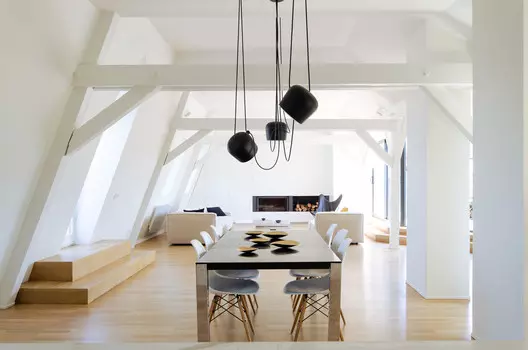 Tekuni 2 Apartments / DDAP Architect. Image © Indra Wiras
Tekuni 2 Apartments / DDAP Architect. Image © Indra Wiras
The Nong Ho 17 House by Skarn Chaiyawat is another beautiful example of Asian Zen design.
 Nong Ho 17 House / Skarn Chaiyawat. Image © DOF Sky|Ground
Nong Ho 17 House / Skarn Chaiyawat. Image © DOF Sky|Ground
Japandi
Japandi is the fusion of Scandinavian and modern Japanese interior design. It combines minimalist design principles with warmth, comfort, natural elements, and muted color palettes. Japanese design features natural fibers like bamboo and rattan, while Scandinavian design embraces shades of grays, white, and black. By blending these two styles, the Japandi aesthetic is born, offering a timeless and harmonious look.
The Ori Refuge by Traama Arquitetura exemplifies the Japandi style.
 Ori Refuge / Traama Arquitetura. Image © Júlia Tótoli
Ori Refuge / Traama Arquitetura. Image © Júlia Tótoli
The Sumu Residence by Echo Design + Architecture is another notable Japandi-inspired project.
 Sumu Residence / Echo Design + Architecture. Image © Echo Design + Architecture
Sumu Residence / Echo Design + Architecture. Image © Echo Design + Architecture
Organic Modernism
Organic modernism, or Biophilic interior design, draws inspiration from nature. It embraces daylight, natural color schemes, and abundant integration of greenery to create a seamless connection between the built environment and the natural world. This style features minimal ornamentation, light organic forms, muted hues, translucent materials, and open floor plans.
The Villa Apollon by Block722 beautifully showcases organic modernism.
 Villa Apollon / Block722. Image © Yiorgos Kordakis
Villa Apollon / Block722. Image © Yiorgos Kordakis
The Villa Mandra by K-Studio is another stunning example of organic modernism.
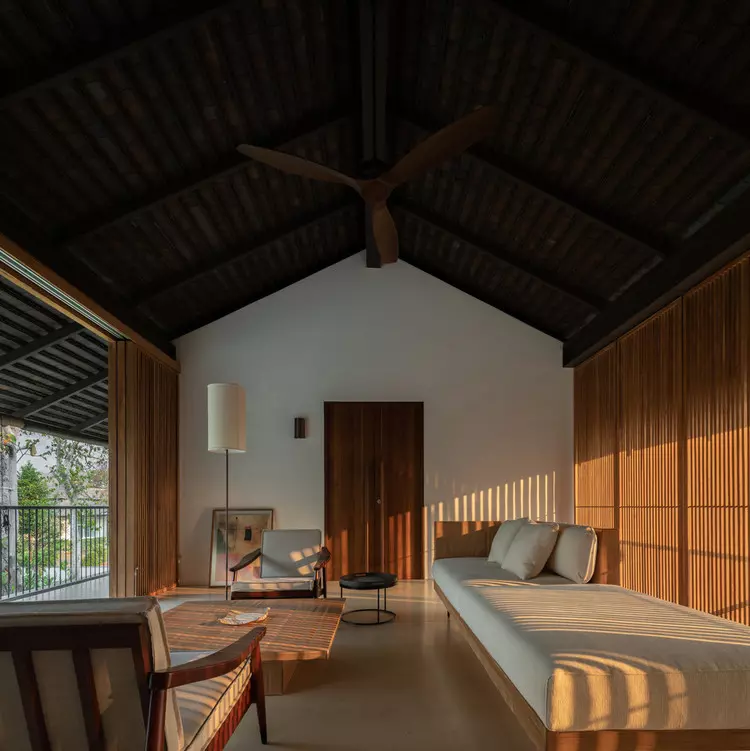 Villa Mandra / K-Studio. Image © Claus Brechenmacher & Reiner Baumann Photography
Villa Mandra / K-Studio. Image © Claus Brechenmacher & Reiner Baumann Photography
Retro Revival
Retro styles from the past have made a comeback in the contemporary design scene. Interior designers reimagine old styles like Art Deco and Art Nouveau within a modern context, incorporating contemporary materials and color palettes. This revival is evident in vibrant color palettes, bold geometric patterns, vintage furniture pieces, and brassy fit-outs, drawing inspiration from the second half of the 20th century.
The Mo-Tel House by Office S&M is an excellent example of retro revival design.
 Mo-Tel House / Office S&M. Image © French + Tye
Mo-Tel House / Office S&M. Image © French + Tye
The Banacado Café by ASKA is another project that showcases retro revival design.
 Banacado Café / ASKA. Image © Mikael Lundblad
Banacado Café / ASKA. Image © Mikael Lundblad
Modern Farmhouse
Farmhouse interiors exude rustic charm and prioritize practicality and simplicity. While commonly associated with countryside houses, this style has made its way into urban settings, creating an effortless look that feels raw, cozy, and trendy. Timber elements and white-washed finishes are characteristic of modern farmhouse design, while vintage and contemporary elements coexist.
The Redhill Barn by TYPE showcases the essence of modern farmhouse design.
 Redhill Barn / TYPE. Image © Rory Gardiner
Redhill Barn / TYPE. Image © Rory Gardiner
The Flinders Residence by Abe McCarthy Architects is another stunning example of modern farmhouse design.
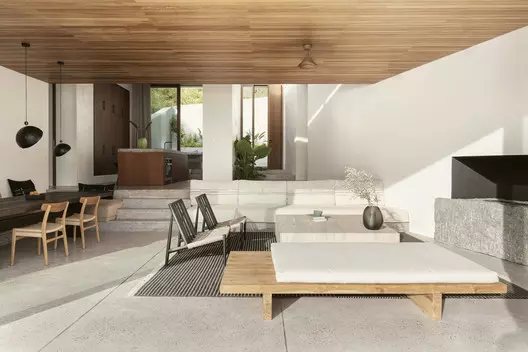 Flinders Residence / Abe McCarthy Architects. Image © Shannon McGrath
Flinders Residence / Abe McCarthy Architects. Image © Shannon McGrath
Mediterranean
Mediterranean interior design takes inspiration from the sunny and classic atmospheres of countries bordering the Mediterranean Sea. It features light and warm tones, shades of blue and green, natural materials such as ceramics, wood, fibers, and wrought iron, and abundant natural sunlight. Ornamented tiling and lush plantations characterize this style.
The Monolith House by Desypri&Misiaris Architecture beautifully embodies Mediterranean design.
 Monolith House / Desypri&Misiaris Architecture. Image © Giorgos Sfakianakis
Monolith House / Desypri&Misiaris Architecture. Image © Giorgos Sfakianakis
The Palerm House by OHLAB is another stunning example of Mediterranean design.
 Palerm House / OHLAB. Image © José Hevia
Palerm House / OHLAB. Image © José Hevia
Eclectic / Maximalist
The eclectic or maximalist style combines various interior design styles and periods into one space. This approach employs vibrant colors, bold patterns, graphics, avant-garde shapes, and an abundance of details to create a strong and playful statement. Expressive patterns, colors, and textures are layered to create a visually striking space.
The Beta Cinema by Module K exemplifies the eclectic and maximalist style.
 Beta Cinema / Module K. Image © Do Sy
Beta Cinema / Module K. Image © Do Sy
The Esquire Office by Studio Bipolar is another notable example of eclectic design.
 Esquire Office / Studio Bipolar. Image © Suryan//Dang
Esquire Office / Studio Bipolar. Image © Suryan//Dang
Minimalism
Minimalist interior design uses the bare essentials to create a simple and clean space. It features a monochromatic color palette, functionality, lack of ornamentation, and clean lines. Natural light and sleek furniture are key elements of this style.
The Avila Warehouse Conversion by Allaround Lab showcases minimalist design.
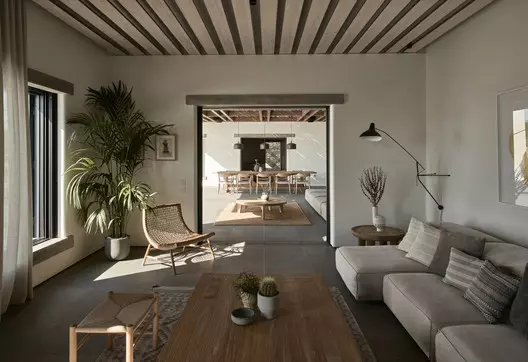 Avila Warehouse Conversion / Allaround Lab. Image © José Hevia
Avila Warehouse Conversion / Allaround Lab. Image © José Hevia
The PP Apartment by Nildo José is another beautiful example of minimalism.
 PP Apartment / Nildo José. Image © Marco Antonio
PP Apartment / Nildo José. Image © Marco Antonio
This wraps up our exploration of trending interior design aesthetics. Each style offers unique characteristics and a distinct visual language. Whether you prefer contemporary sleekness, industrial rawness, or Scandinavian minimalism, there is an interior style that suits your taste. Remember, the details make the design, and it's up to you to create a space that reflects your personal style and enhances the user experience.
Find more interior projects in this My ArchDaily folder created by the author.
This article is part of an ArchDaily series that explores features of interior architecture, from our own database of projects. Every month, we will highlight how architects and designers are utilizing new elements, new characteristics, and new signatures in interior spaces around the world. As always, at ArchDaily, we highly appreciate the input of our readers. If you think we should mention specific ideas, please submit your suggestions.
This article is part of the ArchDaily Topics: Aesthetics, proudly presented by Vitrocsa, the original minimalist windows since 1992. Vitrocsa aims to merge the interior and exterior with creativity. Their unique range of solutions, manufactured in line with the renowned Swiss Made tradition, offers unrivaled expertise and constant innovation, enabling architects to realize the most ambitious visions. Learn more about our ArchDaily Topics here. As always, at ArchDaily, we welcome the contributions of our readers. If you want to submit an article or project, contact us.









